 Mrs Lee is responsible for the English curriculum in our school.
Mrs Lee is responsible for the English curriculum in our school.
Intent of our English Curriculum
At The Cathedral Catholic Primary School we believe that a quality Literacy (English) curriculum should develop children’s love of phonics, reading, writing, handwriting, spelling and oracy. We want to inspire children to be confident in the art of speaking and listening, reading and writing and in their comprehension skills.
We believe that children need to develop a secure knowledge-base in Literacy, which follows a clear pathway of progression as they advance through the primary curriculum. We believe that a secure basis in literacy skills is crucial to a high quality education and will give our children the tools they need to participate fully as a member of society.
Implementation of our English Curriculum
These aims are embedded across our English lessons and the wider curriculum. We have a rigorous and well sequenced English curriculum and framework across school, that provides many purposeful opportunities for reading, writing and discussion. We use a wide variety of quality texts and resources to motivate and inspire our children. Teachers also ensure that cross curricular links with topic work are woven into the programme of study.
The national curriculum for English aims to ensure that all pupils:
● read easily, fluently and with good understanding
● develop the habit of reading widely and often, for both pleasure and information
● acquire a wide vocabulary, an understanding of grammar and knowledge of linguistic conventions for reading, writing and spoken language
● write clearly, accurately and coherently, adapting their language and style in and for a range of contexts, purposes and audiences
● use discussion in order to learn; they should be able to elaborate and explain clearly their understanding and ideas
● are competent in the arts of speaking and listening: making presentations, performing poetry, delivering worship etc
We use The Cathedral Letters and Sounds phonics programme to begin the children’s learning journey. We use Nelson handwriting to complement this scheme so that from their first days at school children are taught to correctly form their letter shapes. Reading, writing and oracy are embedded in our planning cycles which have been adapted from Lancashire’s English planning units. In addition to this, children are taught the statutory words for spelling for years 1 to 6 as outlined in the English National Curriculum (2014).
At The Cathedral Catholic Primary School, we identify children who need support and provide intervention in the most effective and efficient way that we can. Most children on the SEND record have reading and comprehension as one of their targets. Teachers deliver well sequenced English which are adapted to their cohort’s needs. We help each child maximise their potential by providing help and support to allow children to work independently with the confidence, tools and strategies that they need.
We love to celebrate success of all learners and strive to help all children achieve their goals. Reading is celebrated in classrooms and our library at The Cathedral Catholic Primary School. Children are encouraged to read series and collections of books by the same author and they recommend books for their friends to borrow. Our working walls reflect the learning taking place in writing which is celebrated through displays and in the sparkly book. Throughout the school year, our English curriculum is enhanced through World Book Day activities, bedtime story evenings, campfire story evenings, poetry performances and a range of trips and visits which enrich and complement children’s learning.
Impact of our English Curriculum
The impact on our children is clear: progress, sustained learning and transferrable skills are embedded. With the implementation of the writing journey being well established and taught thoroughly in both key stages, children become more confident writers and by the time they are in upper Key Stage 2, a variety of writing genres are familiar to them and teaching focuses on creativity, writer’s craft, sustained writing and manipulation of grammar and punctuation for effect.
Termly assessment shows that many children at The Cathedral Catholic Primary are on track for year group related expectations. We know that all the literacy initiatives outlined above help to boost children’s learning and progress and love of the subject.
As all aspects of English are an integral part of the curriculum, and skills taught in the English lesson are transferred into other subjects through cross curricular writing; this shows consolidation of skills and a deeper understanding of how and when to use specific grammar, punctuation and grammar objectives.
We know that as children move on from The Cathedral Catholic Primary to further their education and learning, that their creativity, passion for English and high aspirations travel with them and continue to grow and develop as they do.
Phonics
The Cathedral Letters and Sounds is a phonics resource based on a document produced by the Department for Education in 2007. It aims to build children's speaking and listening skills in their own right as well as to prepare children for learning to read by developing their phonic knowledge and skills. It sets out a detailed and systematic programme for teaching phonic skills for children starting by the age of five, with the aim of them becoming fluent readers by age seven.
There are six overlapping phases. The table below is a summary based on The Cathedral Letters and Sounds guidance for Practitioners and Teachers.
|
Phase |
Phonic Knowledge and Skills |
|
Phase One (Nursery/Reception) |
Activities are divided into seven aspects, including environmental sounds, instrumental sounds, body sounds, rhythm and rhyme, alliteration, voice sounds and finally oral blending and segmenting. |
|
Phase Two (Reception) up to 6 weeks |
Learning 19 letters of the alphabet and one sound for each. Blending sounds together to make words. Segmenting words into their separate sounds. Beginning to read simple captions. |
|
Phase Three (Reception) up to 12 weeks |
The remaining 7 letters of the alphabet, one sound for each. Graphemes such as ch, oo, th representing the remaining phonemes not covered by single letters. Reading captions, sentences and questions. On completion of this phase, children will have learnt the "simple code", i.e. one grapheme for each phoneme in the English language. |
|
Phase Four (Reception) 4 to 6 weeks |
No new grapheme-phoneme correspondences are taught in this phase. Children learn to blend and segment longer words with adjacent consonants, e.g. swim, clap, jump. |
|
Phase Five (Throughout Year 1) |
Now we move on to the "complex code". Children learn more graphemes for the phonemes which they already know, plus different ways of pronouncing the graphemes they already know. |
|
Phase Six (Throughout Year 2 and beyond) |
Working on spelling, including prefixes and suffixes, doubling and dropping letters etc. |
For pronunciation, watch this 'Sounds of the English Phonic Code'
Reading
Once the children begin to learn the phonic code in the third week of Reception, they will be taught to blend the sounds into words. Our early reading books are phonically decodable up to phase 5 of the phonics. In Reception and Y1 children will bring 2 different books home each week as well as working on a third book in class. They will bring a practice book home and these books will only contain phonemes that they have previously been taught in class. Their second book will be their library book which is to share with their families and will be read to them (see below)
We use 'Big Cat :Letters and sounds' books for our guided reading books and Songbirds and Rigby Star books for our practice books. All are phonetically decodable.
Once in Y2 or when they have moved onto phase 6 of Letters and Sounds, the children then move onto other reading schemes such as Oxford Reading Tree and Project X. The children then take home practice books and library books. The children progress through coloured book band levels which cover early stories and poems to more challenging stories and texts. This reading commitment ladder explains our expectations of reading at home and shows the importance we place on this most essential and important skill.
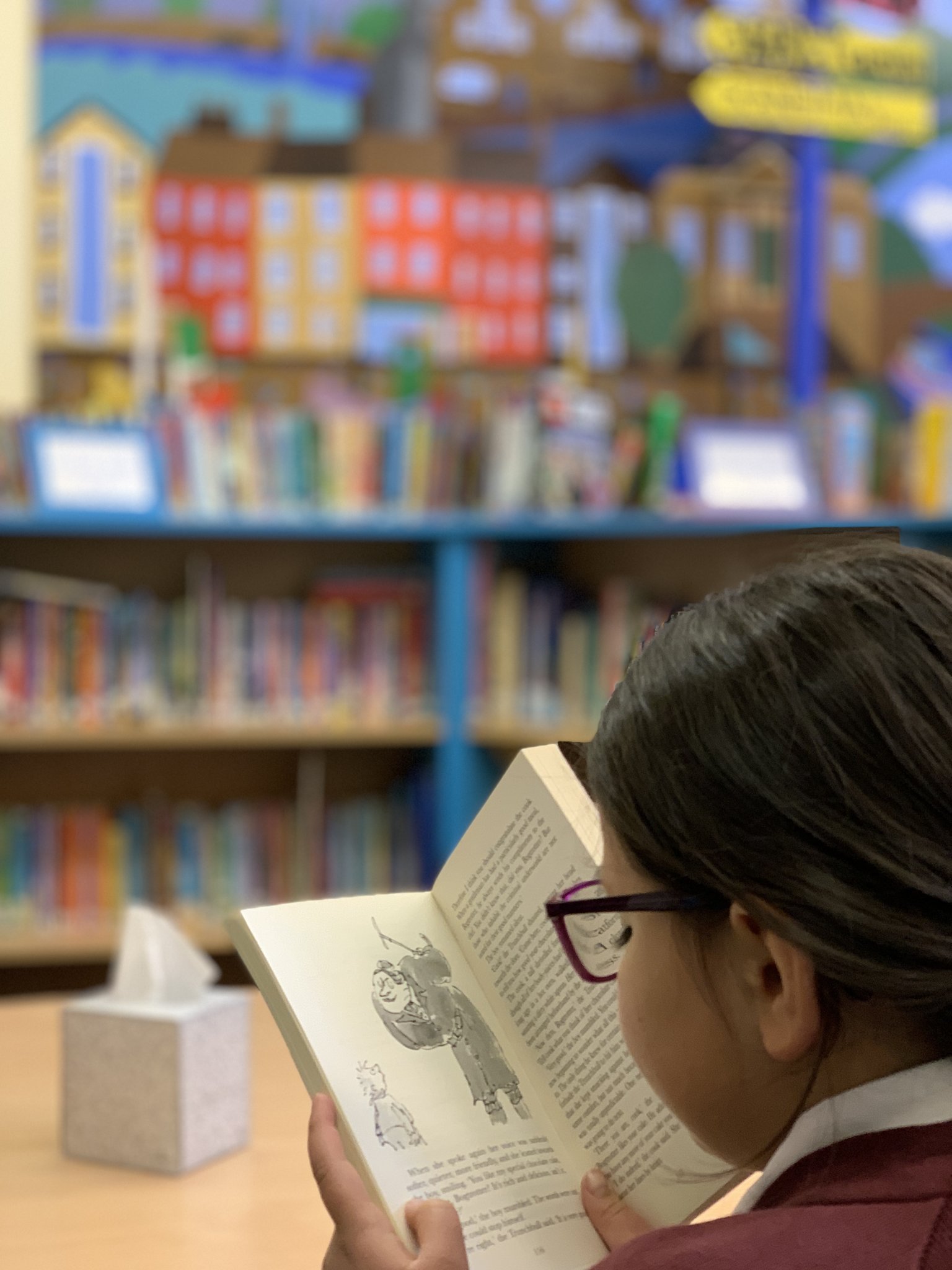 Reading for pleasure
Reading for pleasure
In addition to guided reading and individual home reading, all children from Reception onwards become members of our school library. They are given a barcode each to identify themselves on the library system and will have a minimum of two sessions per week in one of our school libraries. During this time they can browse books and choose one to take home and read for pleasure with their families. This book might be one that they want to read for themselves or have an adult read to them and may vary in difficulty. The whole point in that they read for pleasure whether alone or with a sibling or adult. This book can be changed whenever they have library time.
We hold an annual meeting for parents to promote reading, explain what we do and how parents can help. Look out for the date on the weekly newsletter.
Writing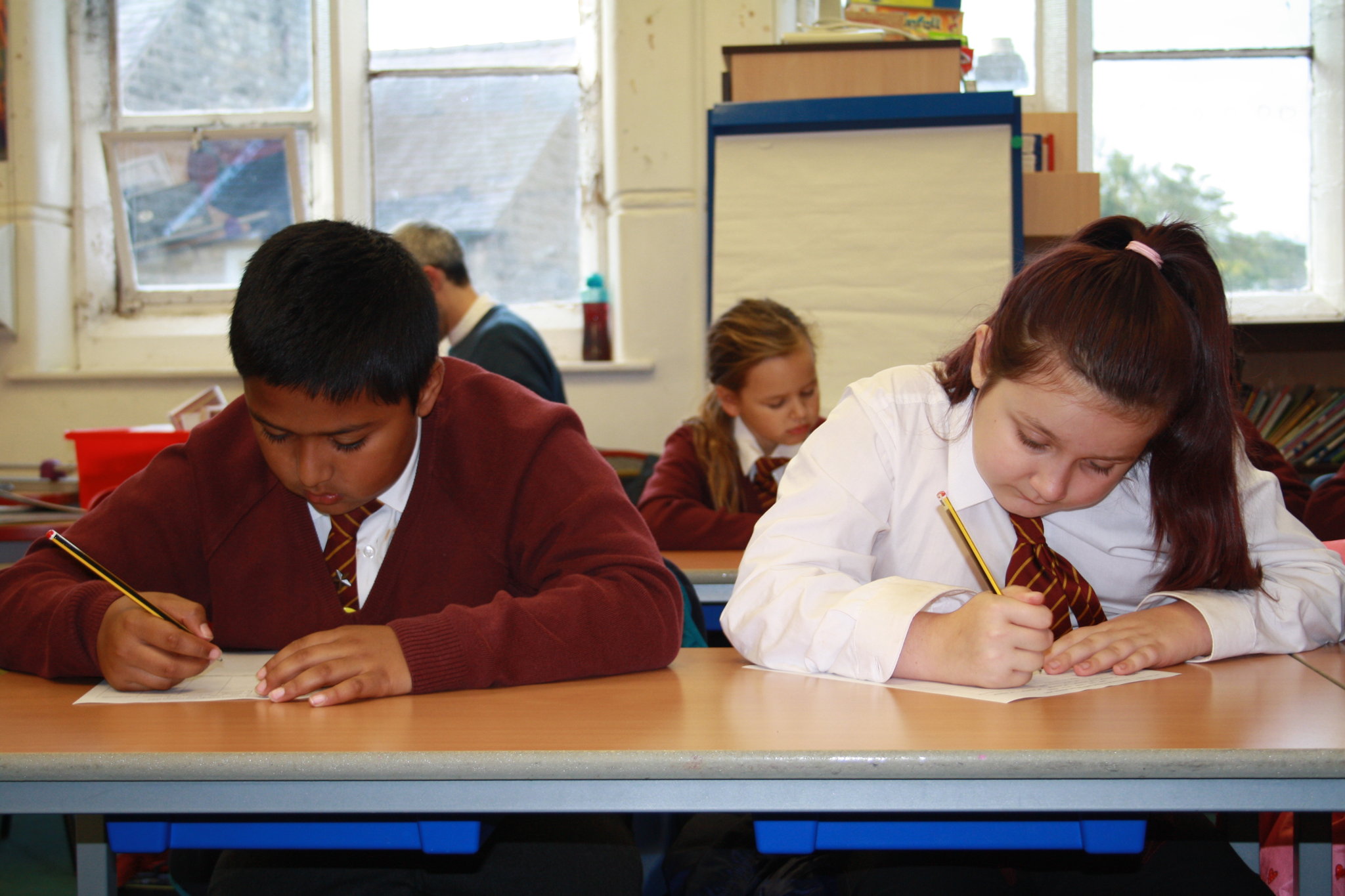
Writing starts in Reception with mark making which as they learn their phonics develops into recognisable phonetically decodable words and common exception words. Once the children are in Year 2 they are expected to know and be using all the common exception words and are taught more formal spelling rules. Spelling continues to develop throughout Key Stage Two through our Purple Mash spelling scheme. Children’s w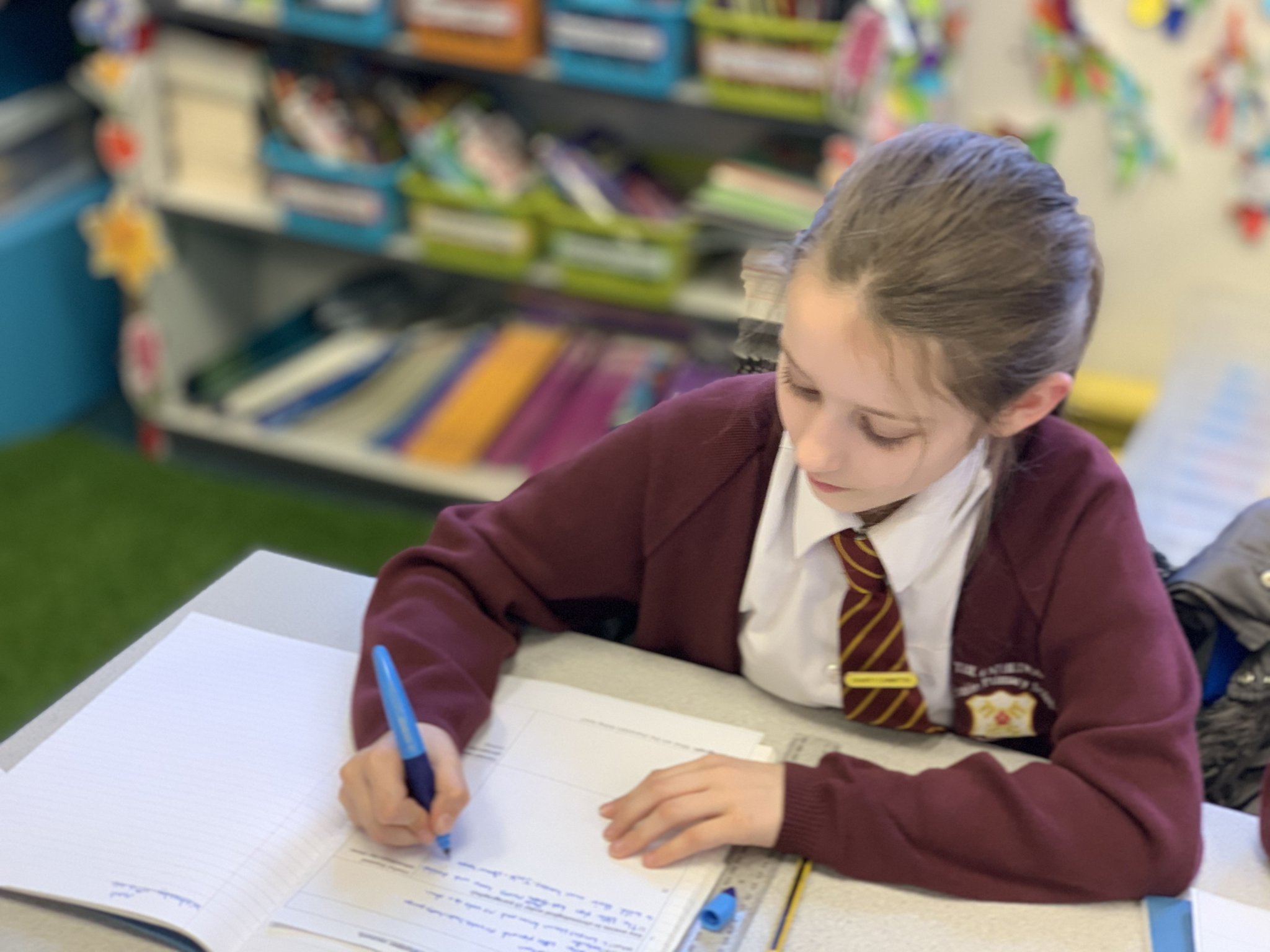 riting covers all genres from poetry and stories to non-fiction, news reports, letters etc. We use Lancashire cross curricular plans as the basis of all the work we do in English.
riting covers all genres from poetry and stories to non-fiction, news reports, letters etc. We use Lancashire cross curricular plans as the basis of all the work we do in English.
Handwriting
Handwriting is taught regularly through short, focused sessions and is linked with spelling, grammar or phonics objectives. We use the Nelson handwriting scheme and through this the children
- achieve a neat, legible style with correctly formed letters
- develop flow and speed, so that eventually they are able to produce the letters automatically and in their independent learning.
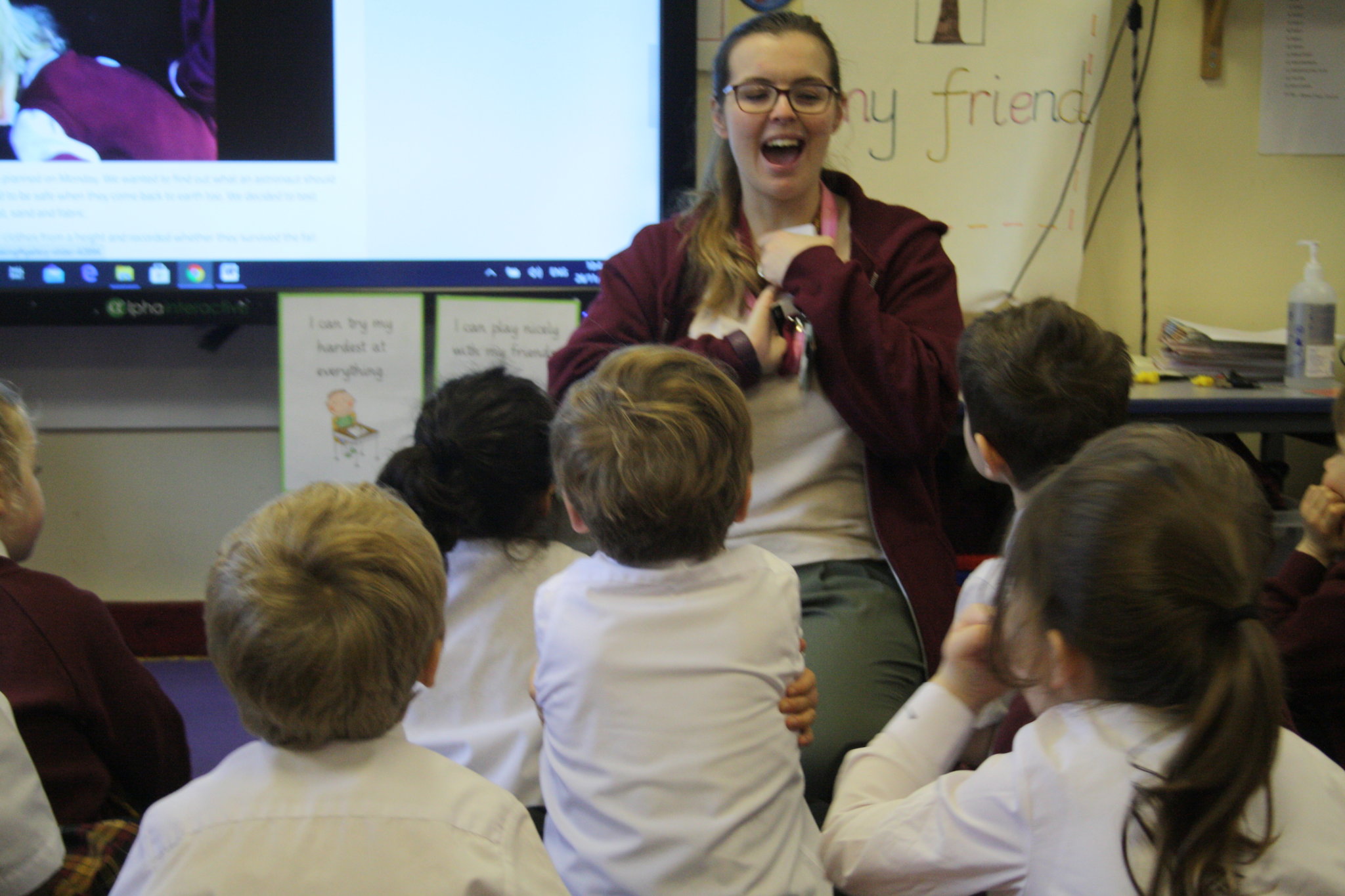
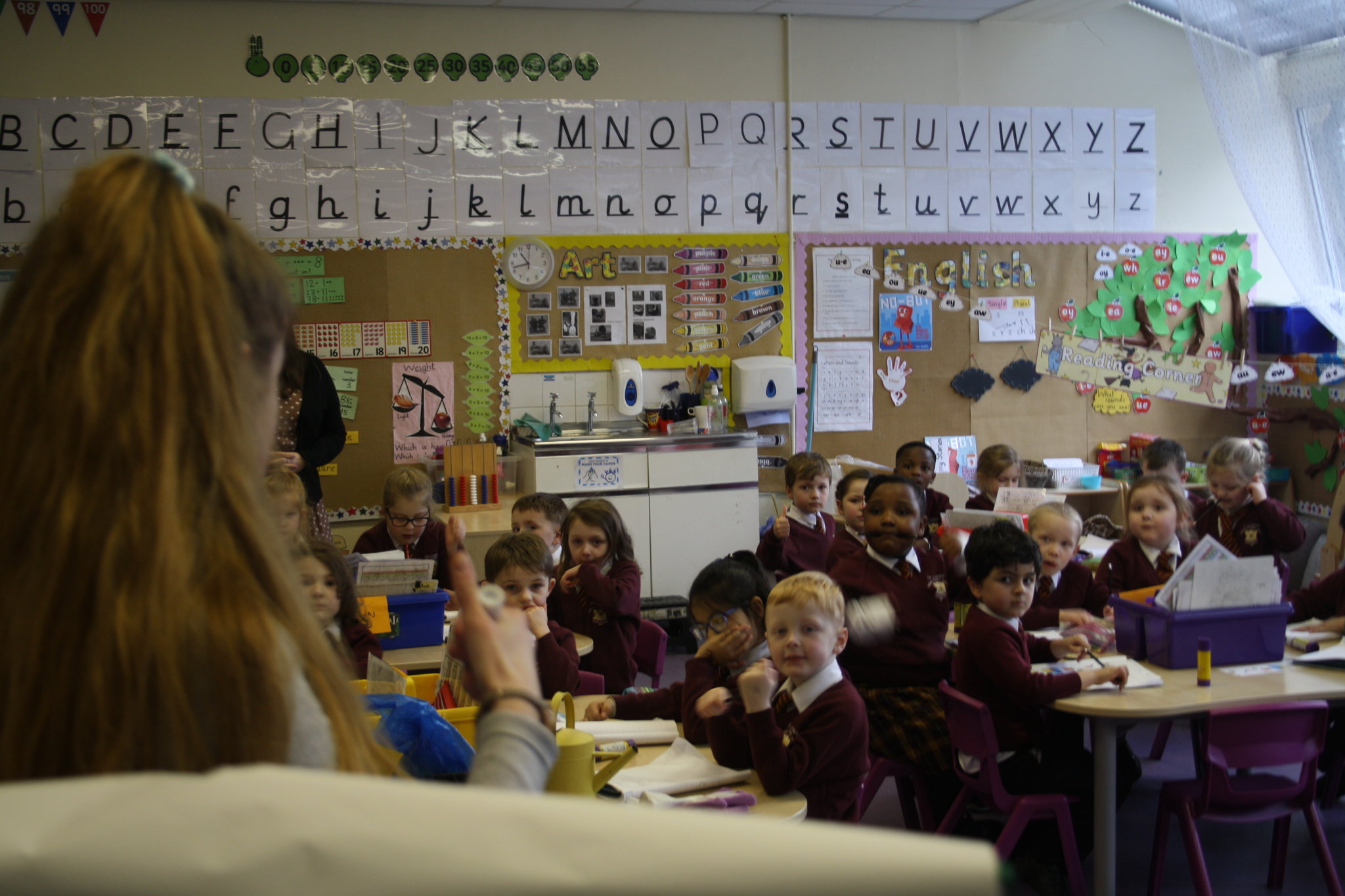
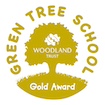
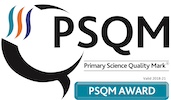

.jpg)
.png)
.png)
